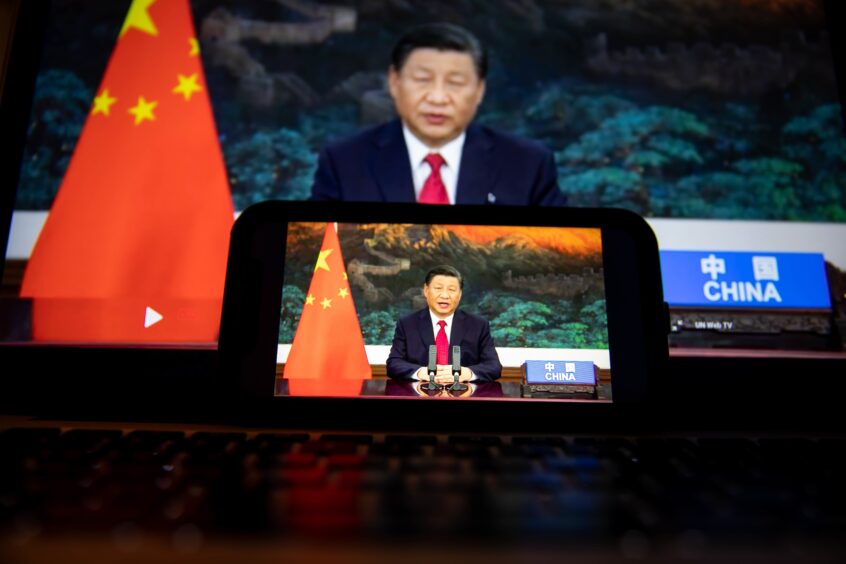
China’s worst Covid-19 outbreak since the inaugural flareup in Wuhan is blunting oil demand growth in the world’s largest crude importer, although most major population centers remain unaffected so far.
Peak congestion in Xi’an, a city of more than 13 million that’s been locked down, fell 29% on Jan. 4 compared with the same day last year, according to data from Baidu Inc. map services. Still, congestion in the commercial capital of Shanghai, as well as in Beijing and Guangzhou was 4% to 7% higher.
Oil investors are seeking to gauge the impact on energy consumption in Asia’s largest economy from the latest flareups as the pandemic grinds on. China is the only country left that’s practicing a zero-tolerance strategy, and while the Xi’an outbreak is of the delta variant, the more-transmissible omicron strain now roiling the world may in time challenge that approach even further. Mainland China has not yet reported any community spread of omicron, although it has appeared in Hong Kong, prompting a wave of fresh curbs.
“In view of the government’s escalated mobility restrictions, IHS Markit has further lowered its projection for China’s total oil demand in the first quarter of 2022 by 420,000 barrels a day,” said Fenglei Shi, associate director of oil markets. That revision includes 248,000 barrels-a-day of gasoline and 124,000 barrels of jet fuel. In comparison, nationwide apparent daily oil demand was 14.2 million barrels in November, according to official figures.
Similarly, Energy Aspects Ltd. reduced its first-quarter forecast for Chinese oil demand by 110,000 barrels a day, while warning of further reductions if more hot spots emerge. And Wood Mackenzie Ltd. has pared its outlook for gasoline consumption by 15,000 barrels a day this quarter.
Xi’an, the capital of Shaanxi province famed for its terracotta warriors, has been locked down since late December, and it’s among the three least-congested cities out of 100 monitored by Baidu. In addition, Yuzhou, a city of 1.3 million in central Henan has been sealed off since Jan. 3, while Zhengzhou, the province’s capital, also locked down some neighborhoods.
The restrictions in Xi’an are some of the toughest in the world, and have caused major disruption. Residents have been barred from leaving their homes without a special reason, and there have been shortages of food and medical care. At least six rounds of city-wide Covid-19 testing have been conducted.
China could retain its tight border restrictions for the whole of 2022 as it prepares to host the Winter Olympics in February and a series of political events, according to Goldman Sachs Group Inc. Strict measures to contain outbreaks — like the lockdown in Xi’an — have disrupted local production, travel, and consumption, adding pressure on the economy.
Lunar New Year
The impact of government containment measures on gasoline and jet fuel usage has added to seasonal weakness in oil demand, according to IHS Markit’s Shi. The upcoming Spring Festival — which run from Jan. 31 to Feb. 6 — may deal another blow to diesel demand as industrial activity traditionally cools around the holiday period and consumption eases during colder weather.
Overall, IHS Markit expects renewed lockdowns, the impact of holidays, and government’s clean-air orders aimed at curbing industrial production over the Spring Festival and Winter Olympics will reduce China’s first-quarter oil demand by 520,000 barrels-a-day over the fourth quarter of 2021.
To be sure, highway traffic over the Spring Festival is expected to be high, with many people preferring to drive given the pandemic, state news agency Xinhua reported. In addition, railway passenger trips over the holiday period are expected to rise by about a third, it said.
Recommended for you
